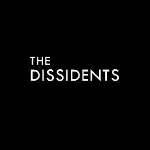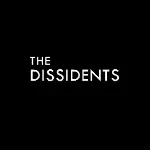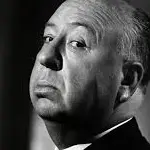
While Spellbound (1945) is one of Alfred Hitchcock's most famous films, it is also arguably one of his most disappointing. Given Hitchcock's reputation for incorporating psychoanalytic themes and elements into his work, the film fails to deliver on its promise to depict the process of psychoanalysis accurately and instead presents a thorough misunderstanding of it.
In Spellbound, the amnesiac hero has this bizarre dream that the heroine, a psychoanalyst, tries to analyze for clues about the murder he witnessed. This dream analysis sequence is widely considered a cinematic tribute to Freud's The Interpretation of Dreams. But it also reveals Hitchcock and his screenwriters’ ignorance of psychoanalytic theory: all the characters and objects in the hero’s dream, despite being distorted into other forms, are successfully decoded and translated by the heroine into their counterparts in the real murder case - a wheel means a gun, a chimney a tree and eyes refer to guards... Of course no one would dream of a Dali-esque surrealist scene, let alone such a direct one-to-one equivalents between dream and reality. However, since the director has creative license, it is understandable that a commercial thriller would portray dreams through exaggerated imagery and simplified storytelling.

A more fundamental problem lies with the logic behind the heroine’s dream analysis, which treats the dream as a rigid reproduction of a real event (the murder), totally contradicting to her identity as a psychoanalyst. One of the most significant conclusions presented in The Interpretation of Dreams is that all dreams, whether overtly or covertly, fulfill the dreamer’s desires; as theses desires are unmet in reality, it is only logical that dreams do not reproduce memories coherently and accurately, but use them as raw material to construct imaginary scenarios in which the dreamer's desires are satisfied. Therefore, the dream in Spellbound, which is a symbolic yet faithful recreation of a murder, defies the very foundations of psychoanalysis; it is in fact a variant of the commonplace notion that "we dream about what we experience during the day". Freud has refuted this notion in the the first chapter of his work:
It might even occur to one to reduce the phenomenon of dreaming to that of remembering, and to regard the dream as the manifestation of a reproductive activity, unresting even at night, which is an end in itself... But such a conception is rendered improbable from the outset by the manner in which the dream deals with the material to be remembered... It is true that a dream will make a beginning in that direction, but the next link is wanting; it appears in a different form, or is replaced by something entirely novel.
Dreams provide access to repressed wishes, fears, and conflicts, not reliable records of reality; the heroine's attempt to decode the dream and find clues to an actual crime is absurd from a psychoanalytic perspective, almost reducing the job of a psychoanalyst to that of a fortune-teller. This also reflects the film’s fundamental divergence from a psychoanalyst’s goal, who seeks not the truth of a single events (a murder or a conspiracy), but the truth of the subjects themselves, the truth of their desires, and ultimately, the truth of the psychic apparatus - i.e. the unconscious - that constitutes the their subjectivity. To achieve this, psychoanalysis may well disregard the worldly, superficial truth and delve into the deepest recesses of one’s mind where dreams take place. In contrast, Hitchcock exploits the dream as a mysterious replica of reality, a riddle carefully filled with clues which the characters strive to decipher, but for what purpose? To provide an idealistic alibi for an outward crime, while remaining indifferent to the frustrations and traumas within.

With such absurdities considered, the following scene appears as a matter of course: despite receiving no prior treatment, the hero miraculously recovers from his childhood trauma right after reenacting the traumatic event (the murder) in reality. This certainly echoes the title card at the beginning of the film, which dreadfully simplifies the process of psychoanalytic treatments: "Once the complexes that have been disturbing the patient are uncovered and interpreted, the illness and confusion disappear..." While it is true that the improvements in psychoanalytic treatment depends on the patients’ insight into their unconscious drives, Hitchcock and his screenwriters confuse the truth of the subject itself with that of the actual murder case, thus resolving the hero's childhood trauma at the moment he proves his innocence. Spellbound is not alone among Hitchcock’s works in its exaggeration/degradation of psychoanalysis as a sort of magic trick: a similar plot unfolds at the end of Marnie (1964), where it is the heroine this time who is cured of kleptimania and androphobia.

Anyway, no one would expect Hitchcock to really understand Freud's theories. He was only interested in the obscenity bubbling beneath the complexes, pathologies, traumas and marginal personalities, trying to find a more eye-catching motive for those crime spectacles he sells on the screen than simple greed or sheer madness. While I don’t intend to nitpick, associating his films with psychoanalysis automatically not only fosters a misconception of the latter but also serves as a cover-up for the poor quality of the former.
Let's examine this from another angle. Spellbound begins with the classic Hitchcockian setup of an everyman caught up in an intrigue, abandoning their former profession, such as the businessman in North by Northwest, the tennis player in Strangers on a Train and the physicist in Torn Curtain. In Spellbound, it is a psychoanalyst that is enamored with her patient (who initially appears in the role of a superior), which particularly echoes the dynamic between the detective and his target in Vertigo (note that even the titles of the two films form mirror images). One might think that this kind of relationship goes against common sense and professional ethics; Yet in psychoanalysis, it can actually happen, and has already happened many times in history: the transference between the analyst and the patient can sometimes, if not properly guided, be misconstrued as love.

However, in Spellbound, the two lead characters do not gradually build their relationship within a psychoanalytic situation; instead, they fall in love at first sight like in a romantic melodrama. In other words, rather than being an amateur psychoanalytic film, Spellbound is more of a professional romance: from the way Ingrid Bergman and Gregory Peck appear on stage bathed in soft white lighting, the two characters seem designed to fall in love with each other. Unfortunately, we expect professionalism from psychoanalysts but amateurish spontaneity from lovers. "Professional" love is nothing more than a series of heterosexual clichés. While Vertigo at least confronts the paradox of "falling in love with a false identity", Spellbound glorifies the blind faith of its heroine, justified by her misunderstanding of psychoanalytic theories which serves both as a shortcut to suspense and an excuse for love.

Hitchcock was indeed a master psychologist of cinema, yet in contrast to a psychoanalyst, he aimed not to liberate people from repression but rather to manipulate them through precision cinematic skills. In its ending, Spellbound turns the revolver towards the camera and kills the murderer as well as the audience. It’s now evident that even the best Hitchcock films always tries to murder its audience: when facing the stunning montage of the shower scene from Psycho, or the suspense gradually unraveled within the apartment room in Rear Window, we have to surrender our subjectivity and become an instrument played by the film.
But on the other hand, there are also films, truly precious films, like those of Nicholas Ray in classical Hollywood and those of Maren Ade in contemporary cinema, films that see mise-en-scene as a healing therapy instead of a means of psychological manipulation. These films give up such dominance and stand beside us like a truly competent psychoanalyst, engaging us in an equal conversation and establish, in genuine psychoanalytic spirit, a transference between audience and film - which is where our love for cinema is born.
written by ANNI
THE DISSIDENTS are a collective of cinephiles dedicated to articulate our perspectives on cinema through writing and other means. We believe that the assessments of films should be determined by individuals instead of academic institutions. We prioritize powerful statements over impartial viewpoints, and the responsibility to criticize over the right to praise. We do not acknowledge the hierarchy between appreciators and creators or between enthusiasts and insiders. We must define and defend our own cinema. |
























































Share your thoughts!
Be the first to start the conversation.